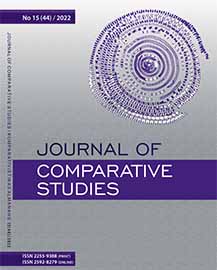Russian Esotericism of the Early Twentieth Century and Kabbalah
Russian Esotericism of the Early Twentieth Century and Kabbalah
Author(s): Konstantin BurmistrovSubject(s): Theology and Religion, Religion and science , Theory of Literature, History of Religion
Published by: Daugavpils Universitātes Akadēmiskais apgāds “Saule”
Keywords: Russia; occultism; Martinism; Kabbalah; Sefirot; Tarot; Mouni Sadhu;
Summary/Abstract: In the early twentieth century, after a long break caused by the governmental and church restrictions and persecution, there was an explosion of interest in esotericism in the Russian Empire. At that time, there was a number of occult groups of different schools and affiliations acting throughout Russia. The teachings, practices and rituals of these groups were syncretic and combined elements borrowed from European occultism, Freemasonry, Martinism and Rosicrucianism, Hinduism, Buddhism, Sufism, as well as from Jewish Kabbalah. The article discusses the place of Kabbalah – both Jewish and in its occult version – in Russian occultism of the early twentieth century. In the center of the analysis is the teaching of one of the leaders of the Russian esotericists and the most reputed occultist of the first third of the twentieth century Gregory Moebes (1868–1930/ 34), the head of the Russian branch of the Martinist Order and the leading figure of the Russian neo-Rosicrucianism. Since the heritage of Russian occultists of that time was not only not studied, but also not described, the author had to undertake a deep search in the archives. The article is partly based on the analysis of the manuscripts discovered by its author, their deciphering, as well as comparative historical and textual study. After discussing the place of Moebes in the history of Russian esotericism, special attention is paid to the interpretation of Kabbalah in his writings. As it turns out, some Kabbalistic concepts, borrowed mainly from the “Book of Creation” (“Sefer Yezirah”), the “Book of Splendour” (“Sefer ha-Zohar”) and the Lurian Kabbalah, played a crucial role in its interpretation of the Tarot arcane. As shown in the article, it was in the version of Moebes that Russian occultism of the early twentieth century became known outside Russia after the communist coup of 1917.
Journal: Komparatīvistikas almanahs
- Issue Year: 2022
- Issue No: 15(44)
- Page Range: 102-123
- Page Count: 22
- Language: English

